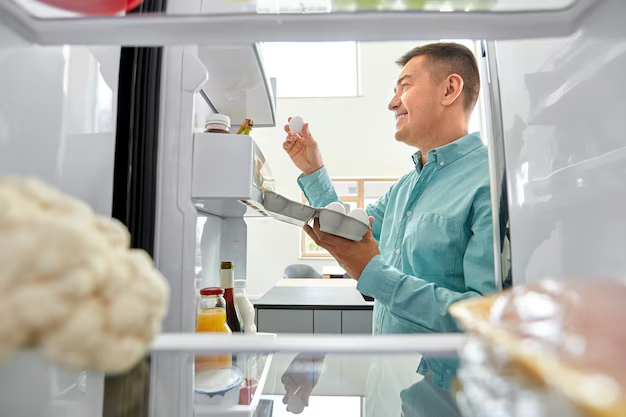How Long Does It Take for a Refrigerator to Get Cold? Understanding the Essentials
Have you ever plugged in a shiny new refrigerator and found yourself wondering just how long it will take before it can start keeping your groceries cool and fresh? Whether you've just moved into a new home or you're replacing an aging appliance, understanding how long it takes for a refrigerator to reach an optimal temperature is crucial for both your food's safety and energy consumption. In this guide, we'll dive deep into the factors affecting this cooling process, explore best practices for setup, and share tips on maintaining the efficiency of your refrigerator.
⏳ Factors Influencing Cooling Time
The time it takes for a refrigerator to get cold can vary widely based on several factors. Here’s a look at the key aspects that play a significant role in this process:
1. Model and Make of the Refrigerator
Different refrigerators have different cooling capacities and features. For instance, top-freezer models often cool faster than side-by-side models due to the layout and distribution of cooling lines. Similarly, high-efficiency models with advanced compressors might reach optimal temperatures quicker.
2. Initial Temperature Setting
Your refrigerator typically allows for adjustments to its temperature settings. Factory default settings are typically a good starting point. However, if you need a specific level, adjusting to a colder setting might take longer to stabilize.
3. Room Temperature and Environment
Placement in a room with a high ambient temperature can extend the time it takes for your refrigerator to cool down. It's crucial to consider factors like proximity to heat sources such as stoves or direct sunlight that can hinder the cooling efficiency.
4. Refrigerator Capacity and Load
A completely empty refrigerator might take less time to cool initially, but adding a large quantity of groceries right away can slow down the process. It's beneficial to cool the appliance before loading it with food.
🚀 Typical Cooling Duration: What to Expect
On average, a new or recently serviced refrigerator will take about 12 to 24 hours to reach the recommended cooling temperature of 37°F (3°C) for the fridge compartment and 0°F (-18°C) for the freezer. It's advisable to check the specific manufacturer's guidelines for more precise estimates.
📊 Quick Cooling Tips for Your New Refrigerator
Practical Steps for Faster Cooling:
Let it Stand: Allow your refrigerator to stand upright for several hours after delivery to let the refrigerant settle.
Initial Settings: Set the thermostat at the recommended setting according to the manual.
Gradual Loading: Initially load a moderate amount of items but avoid overloading during the first cooling phase.
Environment: Ensure adequate ventilation around the appliance and avoid direct sunlight.
🧊 Maintaining Optimal Temperature & Efficiency
Once your refrigerator is up and running, regular maintenance and thoughtful practices will keep it functioning efficiently.
1. Routine Checks
Check the temperature settings regularly. Use a thermometer to verify the internal temperatures and adjust settings as needed.
2. Defrost Schedule
Modern refrigerators usually come equipped with auto-defrost features, but it’s good practice to occasionally manually defrost if needed, especially for heavy frost buildup in the freezer.
3. Clean Coils
Dust and grime on the refrigerator's rear coils can impair its cooling efficiency. Clean these coils periodically following the manufacturer's instructions.
4. Organization Inside
Properly arrange items to allow for good air circulation. Overstuffing can block airflow and inhibit the refrigerator’s cooling ability.
💡 Summary of Key Takeaways
Here’s a handy bullet-list to quickly summarize effective strategies to ensure your refrigerator gets and stays cold efficiently:
- 🧭 Allow settling: Stand the refrigerator upright after delivery for proper refrigerant settling.
- ⚙️ Set initially: Start with standard settings recommended in the user manual.
- 🌡️ Temperatures to target: 37°F for the fridge, 0°F for the freezer.
- 📦 Balance load: Gradually fill the refrigerator; avoid overfilling.
- 🔍 Regular checks: Verify internal temperatures with a thermometer.
- ✨ Clean regularly: Keep coils dust-free for optimal efficiency.
- ⏱️ Schedule maintenance: Regularly monitor and perform necessary maintenance.
Final Insight
Understanding the time it takes for a refrigerator to reach ideal temperatures isn't just about curiosity—it's about ensuring the efficiency and longevity of the appliance, as well as guaranteeing the safety of your food. By considering the factors that influence cooling times and adopting good practices for setup and maintenance, you'll optimize your refrigerator's performance and energy use. Remember, patience paired with precaution can lead to optimal cooling and savings on your electricity bill.
